|
It’s fair to say that we all enjoy being swept away by a thrilling story. Considering the demands of life, work, and family, when we invest the time to read a book, we want it to be more than good. We want it to be great, which begs the question: What makes a book unforgettable? Let’s talk about that.
CONFLICT is paramount. It’s the key that fuels a great story. How could this surprising element be so important? Don’t we get enough conflict in our world? Yes, we do, but this level of conflict is different. A solid story begins with an issue we can relate to. It must be a problem that we would feel compelled to fix. Then the story ramps up to such a level that this character’s life and everything he or she cares about is in danger. Conflicts with such high stakes make our daily problems seem minor. Great characters make a book memorable. Therefore, the other factor of a great story is an extraordinary character who steps in to do what we can’t. We all know what it feels like when life throws problems at us that we simply can’t fix. That common frustration makes living vicariously through a character, who can put an end to an injustice, so compelling. It makes us feel like busting a door open and pumping a fist in the air. It’s incredibly satisfying. Every story starts with a battle between the hero and the villain. The bad guy wants revenge, money, or power and will do anything to get it. The hero seeks justice and to stop the treat, not only for himself but to protect others. This is the engine that drives the story, but readers want more. Therefore, we ratchet up the tension and the stakes by having the villain intrude into the life of the hero by interfere with his or her career or threatening those whom the hero holds most dear—a brother who is a wounded warrior, a beloved dog, or a best friend that means everything. In my book Kill Notice, this plays out with Bowers, the main character. Imagine being in her shoes where you are a detective in Washington DC and are tasked with taking down a serial killer who is so elusive, it’s like a hunting an apparition. That is scary enough, but then the stakes go up and he starts leaving buttons from his latest victim taped to your front door. He’s getting way too close and making you wonder who is hunting whom? Next, the unthinkable happens and it gets worse. You find he’s left buttons inside your home and place of work. Adrenaline spikes and nowhere is safe. To make the story even more intriguing, we dive much deeper than the main conflict, where subtleties have a huge impact. Whether it’s being uncomfortable speaking on camera or fear of flying like the Jack Ryan character in the Tom Clancy series who was the only survivor of a helicopter crash, we’ve all had bad experiences and fears. Internal conflicts make the main character believable, especially when the hero must overcome a long-standing fear or an aversion to succeed. But we don’t stop there. If the hero and villain have experienced similar traumas, readers witness how the hero takes that experience and turns it into empathy and takes action to prevent such suffering for other. Meanwhile, the villain seeks revenge for a perceived injustice by attacking a person or the society that he sees as rejecting him. Now you have the fuel that ramps up the emotional energy and makes the book hard to put down. Readers are rooting for this hero to triumph. Characters need to feel like people you’ve known or would like to know. Like us, great characters will have fears, skills, and a sense of humor. They will want the same things we want, and they’ll have quirks. In a story, we can explore all these. For example: Bowers, who is tough and resilient, has some novel quirks. With her background in the military and law enforcement, she is well equipped to face off with a terrorist or hunt down a killer, but don’t ask her to open one of those tubes of pre-made biscuit dough that pops when you open them. This quirk makes her human and provides a bit of humor that keeps it real. Putting readers behind the eyes of a character who is an ordinary person in extraordinary circumstances makes for a compelling story. For example: in my series, men and women find Kate Bowers very relatable. She can swear like a soldier and handle most weapons with ease, and yet she cares about those around her. Compassion is her biggest asset and her biggest weakness, which creates even more conflict for her. For example: In Island of Bones, Bowers’ life is on the line. Her captures intend to kill her and dump her body at sea. An opportunity abruptly arises where she has the skill set to escape and save herself, and yet she doesn’t. Instead, she chooses to stay in the fight to protect the vulnerable victims onboard. This brings us to an important point. We need characters that do something that matters. In the new Reacher TV series based on Lee Child’s Reacher Series, Jack Reacher isn’t just a mountain of muscle rambling through the small town of Margrave to beat up the bad guys. We find ourselves touched by a twist that makes this very personal to him and by the way he takes the time to care for a mistreated dog. The Reacher character is compelled to protect the vulnerable by doing what they can’t. As much as we love the action and adventure, the amazing thing about thrillers is the opportunity to live through a character who does what we wish we could do to make things right. These dynamic stories allow us to explore what we would do in the shoes of a hero and perhaps they also help us recognize the hero within each of us.
0 Comments
 Imagine being involved in a life-or-death situation where a woman and her child are being held captive by an armed felon who is threatening to kill his captives or a huge situation where a madman is threatening to kill dozens, if not hundreds of innocent people, and it’s your job to talk him out of it. Award-winning author, Marta Sprout, obviously goes above and beyond when it comes to research. She is here to tell us about one of her resources, Gary Noesner, who has made a career out of hostage negotiations. Gary was at hundreds of critical incidents and used those experiences to help develop the hostage negotiating techniques used today. Marta, who is Gary Noesner? That’s a big question. Gary is a man with a lot of stories. How he came by them is enough to raise the hair on our arms and put the hardiest of us on the edge of our seats. Gary spent 23 years as an FBI hostage negotiator and retired after 30 years within the Bureau as Chief of the FBI’s Crisis Unit and the Critical Incident Response Group. He was the first to hold this title. Gary has written a book titled STALLING FOR TIME, My Life as an FBI Negotiator. In this book he takes the reader through many intense standoffs and discusses how in the early days of hostage negotiations, law enforcement often overreacted to a violent offender’s threats for understandable reasons—they wanted to save lives by rescuing the victims as quickly as possible. Unfortunately, charging in often escalated the violence and turned out badly for all involved. He says, “That is one reason why the most critical skills of a negotiator are self-control and the ability to help those around you keep their cool.” A fascinating part of his book is understanding how much effort is directed toward calming and coordinating with the officers and agents around you, so everyone remains patient. Another interesting factor is listening to Gary discuss the grueling days at the Waco incident, what was learned there, and watching how the FBI developed their highly sophisticated negotiating techniques over time. Gary’s work inspired me. I went on to teach at the police academy and gave our instructors copies of his book, which is now used in their de-escalation classes. This led to an amazing opportunity to be embedded with my local Hostage Negotiating Team and our SWAT Unit while they went through training scenarios. What don’t we know about Noesner? It’s clear that it takes someone with impressive commitment and bravery to step into such high-stakes situations. It’s interesting that his pivotal moment came at the age of twelve as he watched a popular TV show, The Mickey Mouse Club, as they visited the FBI Headquarters in Washington, D.C. What I enjoy most about Gary Noesner is his remarkable observation skills that are mixed with an extraordinary understanding of human nature. You can’t help but admire a man who is so intensely focused on the welfare of others even if it means putting his life on the line. What is Gary Noesner Doing Now? In addition to consulting and speaking to law enforcement groups, Gary has two exciting projects coming up this year. This spring for the 30th anniversary of the Waco incident, NETFLIX will air a major three-part documentary about Waco called “Waco: Ranch Apocalypse.” Gary was deeply involved in the creation of this project and was interviewed periodically during its episodes. The other event is the second season of the Paramount Network’s series. This six-part, 2nd season will be called “Waco: The Aftermath” and will air in the summer of 2023. Knowing Gary, these will be well worth watching.” What is Gary Noesner Like? He is many things. Beyond a tremendous storyteller, Gary has a remarkable ability to connect with those who are at their worst. He is also a family man and a great guy. When I told him about my book ISLAND OF BONES, Gary didn’t hesitate. He read the book. Here is what he had to say: "In Island of Bones, Marta Sprout has written an exciting action-packed suspense thriller. Set in colorful Key West, her plot is filled with twists and turns coming at the reader from all angles. This non-stop thriller transports the reader along on a roller coaster ride with never a dull moment. Weaving in local knowledge of Key West and describing many of the colorful free spirits who reside there serves to add a great deal of authenticity to the story. Kate Bowers, the main character, is a terrific blend of brains, strength of character, and pure guts as she almost single-handedly takes on the evil that has invaded this tranquil setting and makes those responsible suffer as a consequence. She is the type of strong character that we all love to root for to succeed against all odds. Those who enjoy suspenseful stories will be glad they decided to read this spellbinding thriller." –Gary W. Noesner, Chief, FBI Crisis Negotiation Unit (retired) ISLAND OF BONES available at: amzn.to/3zWBmZ9 Gary Noesner’s book STALLING FOR TIME is available on Amazon. His website is https://garynoesner.com/ Follow Marta on: Instagram: https://www.instagram.com/marta_sprout/ Facebook: https://www.facebook.com/MartaSproutAuthor/ Linkedin: https://www.linkedin.com/in/marta-sprout-481ab741/  Edoardo Ballerini, the most sought-after voice in the audiobook industry. Audiobooks are hot. They outsell other formats ten to one. However, we can’t help but think that the truly great voices that bring these stories to life have a lot to do with the rising popularity of audiobooks. One of those voices stands out—that of Edoardo Ballerini. It’s not hard to see why he’s often referred to as “The Rockstar of Audiobooks,” but his skills don’t stop there. He has appeared in over 50 films, such as Dinner Rush and Quarry, and TV shows, including his role as Corky Caporale on The Sopranos and in Hulu’s new series entitled Retreat. New York Times calls him “a master in his field… at the forefront of a new kind of celebrity.” He is also the two-time winner of the industry’s highest prize, the Audio Publisher Association’s Best Male Narrator Award. His numerous credits, also include winning the Thriller/Suspense Audie Award, the Audio File Golden Voice Award, and he is a two-time winner of the Society of Voice Arts Award. In 2019, Edoardo was named “Golden Voice” by AudioFile Magazine, an honor bestowed on only 40 narrators in the magazine’s 22-year history. Edoardo has appeared in more than movies. Articles about him have graced the pages of The New York Times, The Guardian, Elle Magazine, US Today, Audible, Business Insider, People Magazine, and many more notable publications, making him one of the most sought-after names in narration. Edoardo Ballerini is certainly a new kind of celebrity. We’ve heard his voice and seen him on the screen, but most of us wouldn’t recognize him. Who is Edoardo Ballerini? To answer that question, we went to award-winning author Marta Sprout, whose thrillers KILL NOTICE and ISLAND OF BONES are narrated by Edoardo. Here is what she had to say. “An audiobook that is worth your time, obviously starts with a terrific story, but it takes a narrator with a profound voice to bring the text to life.” What is it about Edoardo’s voice that captures people’s attention? “Many things,” said Marta. “There’s a huge difference between reading words and telling a story. Edoardo is by nature and hard work a master storyteller. He has said, ‘I’m inspired by storytelling in all forms, and poetry for its use of language.’ True, but there is more. Much like musicians who seem to have music in their veins, Edoardo with just his voice, pulls you into a story and captivates you with each word. I once told him that I understood playing the part of a character in a film, but in audiobooks he plays dozens of different characters within the same story. In my book ISLAND OF BONES, he is the voice of three or four people, who are all in the same room and Edoardo captures each of them perfectly. Nothing is over acted, instead readers feel as if they are in the room, hearing directly from a crusty boat mechanic, a terrifying killer, a soft-spoken clerk, a victim in shock, or a cop dealing with a rush of adrenaline. The voices are genuine and riveting.” What is it like to work with Edoardo? “This might sound a bit corny, but Edoardo is an ordinary man with the capacity to speak with the voice of humanity itself. He is diverse in his love of literature and a brilliant talent. In a few words or with a slight inflection, or a hushed sigh, he can make you laugh, put a lump in your throat, or bring you to the edge of your seat. Despite such stunning skills, he is humble. The project isn’t about him. No matter if he is narrating T.S. Eliot or Dean Koontz, Robert Dugoni, or my thrillers, it’s all about the story. One of the things I appreciate most is his enthusiasm and how easy it is to communicate with him. It’s so refreshing to work with someone who understands the subtleties of building conflict and tension and developing characters that seem like someone we’ve known. He readily grasps humor and moments in a story that speak to who we are as people. His extraordinary understanding of life and human nature is reflected in his voice and his love of poetry.” What don’t we know about him? “We know Edoardo is a remarkable person who is moved by the beauty of language, but there is much more to this man. Beyond English, he is fluent in Italian. His father was a poet, and his mother was a writer. He is well-educated and won a scholarship to study Latin in Rome. This matters because learning a language isn’t just about words, it provides insights into how others think and see their world, which has helped him portray everything from a killer to an autistic person, to a good man in a terrifying situation. My understanding is that his pivotal moment came in Italy where he met a group of international actors and quickly joined the troupe.” What would you say to Edoardo? “When I first met Edoardo, I was quickly sold on his skills. As I got to know him, I couldn’t help but appreciate him as a person and his abiding love of the arts. If he were sitting across from me right now, I would say Thank You. He has told me how much he enjoys narrating my thrillers, but the truth is… Edoardo, you inspire me. It’s an honor to work with you.” What would you say to readers? “That’s easy. If you haven’t listened to an audiobook narrated by Edoardo Ballerini, do it now. You won’t regret it.” ISLAND OF BONES by Marta Sprout and narrated by Edoardo Ballerini is truly an unforgettable story. Sample: link to https://www.martasprout.com/island-of-bones.html ISLAND OF BONES narrated by Edoardo Ballerini is available at Audible and other audio booksellers; Other formats are available at: Amazon and https://books2read.com/Island-of-Bones For more information on Edoardo go to his website: https://edoardoballerini.com/  Written by FBI Agent Steven B. Riggs “Don’t mess with Bowers.”— Riggs Kate Bowers and I have an interesting relationship that spans working together and knowing each other on a more personal level. She has always had my six. Because of that, fellow agents and those in law enforcement often ask me about her, especially when I’m decompressing with the guys at Old Ebbitt’s Grill. One night, something happened that needed no explanation. I had been waiting for Bowers and enjoying a Heineken at the main bar when I caught a glimpse of her outside. At near six feet, she was easy to spot as a knot of loud pushy reporters encircled her. They apparently had picked up on the big case she’d been working and took the opportunity to corner her. The press jostled for her attention by thrusting their microphones at her. “Dammit,” I’d said to the guys at the bar. “She’s been through hell and doesn’t need this.” I flagged down the head waiter and a handful of the guys from the bar followed. Up ahead, reporters clogged the entrance, making it impossible for customer to enter or depart. One cameraman shoved Bowers into the front door and thrust his lens into her face, cutting her chin. “Oh, buddy,” I said. “You just screwed up. The guy next to me chuckled. “Can’t wait to see her reaction to that.” Bowers grabbed the slender man by the shirt, hauled his ass inside, and slammed him against a wall next to the door. The reporters outside jockeyed to see, but she and the cameraman were out of their line of sight. She had at least a few inches on him and all he could do was stand there looking startled. I pushed closer and pulled the head waiter along with me. The men behind us fanned out and blocked reporters from swarming inside. “Is she okay?” asked the head waiter as he directed customers and staff to stand aside. “She’s fine,” I told him. “It’s the cameraman who’s in deep shit.” True to form, Bowers ripped the camera out of the guy’s hands and dangled it over the banister of the stairwell, leading downstairs to the restrooms. If she were to let go, it would drop twenty feet before shattering to pieces on the black-and-white tiled floor below. Inches from the man’s face, Bowers glared down at him. “Here’s the deal,” she growled. “If you ever lay your hands on me or any other officer again, I’ll charge you with assaulting a police officer and haul your ass to jail. You hear me?” The man’s eyes darted between her and his camera and back again. “Look, I’m sorry.” His eyes were wide, and his voice pleading. “I’m just trying to do my job.” “What do you think I’m doing?” She wiped the blood off her chin and shoved the man’s camera into his chest with the same amount of force he’d used on her. The guys from the bar appeared amused. “Next time,” she said, “if you want to talk with me, ask. Nicely.” Bowers pointed to the door. “Leave. Now.” “Coming through,” I ordered as I rushed forward. “Make a hole.” Two men from our impromptu posse escorted the cameraman outside. As the door opened, several reporters tried to enter, but stopped when the guys from the bar lined up like a wall of guard dogs. When I directed Bowers toward our table, a fellow agent nodded toward the railing where Bowers had held the cameraman. “Geez, Bowers. What the hell was that?” “Restraint,” she said as we walked away. “I couldn’t have said it better.”
Have you ever wondered what it would be like to be embedded with SWAT?
After three days with them, here is what I discovered.
Unlike the jobs most of us do, these officers are called to duty at a moment’s notice and at all hours. Their job demands sacrifice. Their entire attention is fully focused on protecting you, instead of their holiday dinner or their child’s birthday celebration that they are missing.
SWAT is an acronym for Special Weapons and Tactics. These officers have been trained for one purpose—to keep you safe. They know how to deal with the type of situations that put you or your family in the worst types of danger. Envision a normal day. You grab a coffee and arrive at work early to prepare for an important meeting. Before you even get started, you receive a call that no parent ever wants to hear. You can hardly comprehend what the person is telling you. A coworker turns on the news and you see your house on the screen where your teenage kids are getting ready for school. The person on the phone tells you that a pair of bank robbers running from the police have just broken into your home and taken your children hostage. You say to yourself, “This can’t be happening, not in my neighborhood.” Helpless doesn’t begin to describe how you feel as you fall back in your chair. There are no words for what would run through your mind, except the desperate need for help. Your children’s lives are at stake and you need help now. At that very moment, your local police department has responded, swift actions are already underway. Dispatch kicks into high gear. Before you received the call, SWAT had deployed and were in play in a matter of minutes. Roads are blocked off to protect bystanders and contain the situation. Help arrives on a vast scale with a formidable team who surrounded your home with over-whelming force. There is both a science and an art to what is about to unfold. In addition to the impressive SWAT team, they have a Hostage Negotiation Team (HNT). Both work hand-in-hand with the command unit. Depending on each unique circumstance, their combined skills are carefully coordinated to achieve the best possible outcome for everyone. Safety matters. Every life matters. Every asset from highly trained officers, to specialized equipment, to exceptional communication, to armored vehicles are brought to bear for the protection of your children and ideally taking suspects into custody without harming them either. With someone you love at the mercy of violent criminals who are heavily armed and determined to get away at all costs, a higher-level response is required. Our SWAT teams have to adapt in order to contain those who are determined to cause hurt to others.
For this reason, law enforcement today is committed to using exceptional restraint and a measured response. HNT engages suspects to de-escalate the situation whenever possible, even if that takes hours. The book Stalling for Time written by retired FBI agent, Gary Noesner, exemplifies the concept of taking the time needed to resolve a situation as peacefully as humanly possible.
If suspects refuse de-escalation efforts, then SWAT will engage with every non-lethal means possible to resolve a situation such as tear gas, pepper spray, bean bag rounds, flash-bangs, K-9s, or Tasers. When suspect still refuse to co-operate, our officers have no choice but to put themselves between the innocent victims and violent subjects to stop their aggression and protect life. Seeing how seamlessly SWAT and HNT work together is not surprising. They have many methods of securing a scene and contacting perpetrators. HNT units are well skilled as are the members of SWAT. Their goal is to resolve the situation and get everyone out alive without anyone getting hurt, including the suspects. SWAT officers say, “If anyone is hurt, we feel as if we have failed.” Safety for all is their number one priority. Unfortunately, there are some criminals who will not comply and don’t care who they hurt. Those individuals by their actions give officers two choices: allow the suspect to injure or kill victims or to respond as needed to protect the innocent. These officers choose the latter, but they don’t do it blindly. It is stunning to witness a scenario such as this from inside the command units where an amazing amount of information is coming in on multiple monitors, headsets, and radios. People with exceptional training and focus quickly glean the important facts and stay on top of every critical turn in the case. The task is stressful, but these people are adept at turning chaos into calm and de-escalating emotions. Our officers are trained to have cool heads, even under fire. You might ask how do they do that? It comes down to extensive training and unequaled dedication to duty. They practice and train continuously. They keep themselves and their gear in top condition. They are able to run in heavy gear on the hottest or coldest of days. Their comfort is not important to them—you are. They know when to move in and when to exercise the type of patience that will wait as long as necessary for a positive outcome. If you were to see these men and women in SWAT preparing, you would be impressed by their attention to safety and details. When they are gathered for training, they pat each other on the back and help each other with their gear. They triple check all safety issues. Like a bunch of brothers, they also tease the hell out of each other. However, there is something even more striking. When they are called to a scene, their single-minded focus is on the preservation of life, even if that means running into a fire fight. Perhaps more stunning than all their gear and training and formidable presence—or even their exceptional bravery—is that these officers stand between danger and you. These officers willingly march into lethal situations to protect total strangers. There is no amount of respect that seems sufficient when one human being is willing to put it all on the line for another. These officers are not warriors. They do not consider themselves heroes. They are not soldiers. Rather they are what I would call badass guardian angels who are there when you need them the most. Now go back to the scenario with your children. As you wait with your family and friends for information, the SWAT team does their job. The suspects are given the time and hundreds of opportunities to co-operate. SWAT then exercises whatever measures are required to save your kids. The television screen crackles with BREAKING NEWS and you see your children surrounded by SWAT officers hustling them to the safety of an armored vehicle. Your phone buzzes. You answer. “We’ve got them. Your children are safe.” You then learn that the SWAT Doc put his life on the line to ensure he was there to provide immediate care if your children were injured. The emotions hit as you realize your children are safe. Your sense of relief is beyond words and you feel grateful for the men and women who did whatever it took to protect your family. You now understand the full significance of SWAT and what it means to have a unit ready and dedicated to protecting you and your family when you need it most. They have the training, the strength, and the will and commitment to be there for you. Tribute to a Great Man : By Marta Sprout
Dave enthusiastically pointed others toward the path of success and cheered them on. He had a keen understanding for people who had experienced trauma, a rocky childhood, or hard times. As a kid and as a prison guard, Dave experienced brutality firsthand. Many who’ve endured such hardships understandably become angry, bitter, and jaded. But not Dave. He still saw wonder in the world and never allowed those grim realities to derail nor define him. He charted his own path. Dave chose to be a gentleman with unshakeable ethics. As caring as Dave was, he was no pushover. The man seemed to have a backbone of titanium and had no trouble standing up against anyone, especially those who abused others. Dave knew the road to a successful career as an author wasn’t a stroll in the park. The way he mentored so many writers set Dave a part. No doubt, Dave had a tremendous gift for storytelling, but that wasn’t enough. He felt a need to give back and to help others. Therefore, he took us all with him along the path. If Dave were here now, what would he say? He would point out that the time invested in you was well spent, because you have the ability to reach your goals. Dave would remind you that everything you need to succeed is already within you—you just need to trust it. Listen to that voice deep within you—it’s the voice of your friend Dave whispering to you. Dave would often say that his life was one hell of a great ride. He enjoyed it and lived it fully on his terms. And he would advise you to do the same. To my dear friend: Dave thank you for all you have done. Know that you made a difference and that you will not be forgotten.
|
Marta SproutDiscover the latest news, explore behind the scenes of law enforcement, plus fun stories along with my adventures in the outdoors. Archives
November 2022
Categories
All
|


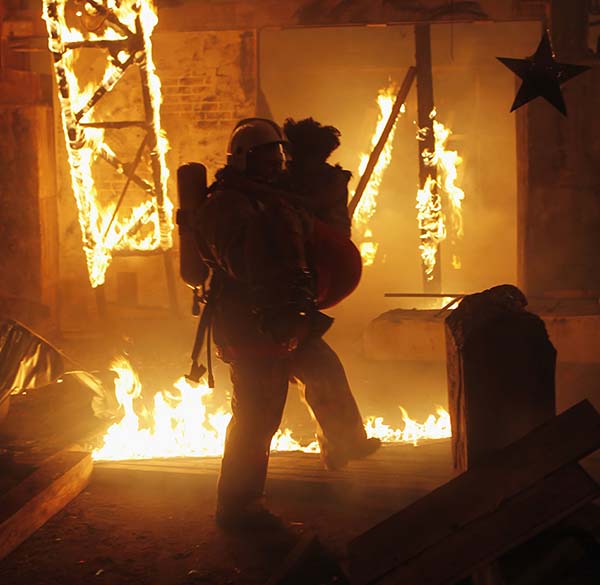
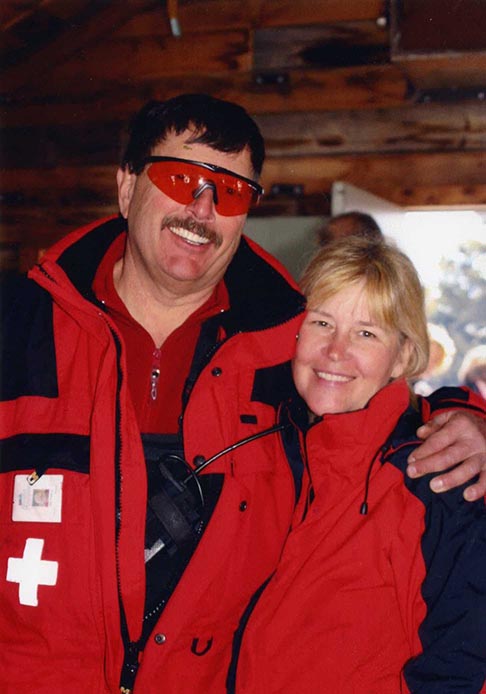
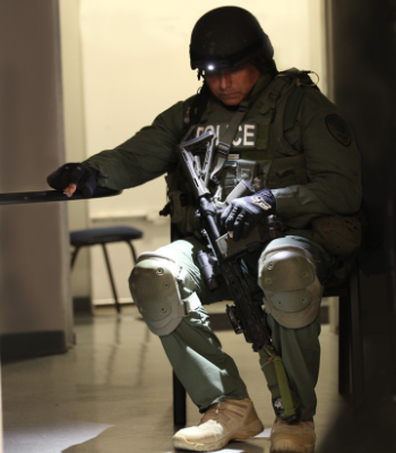
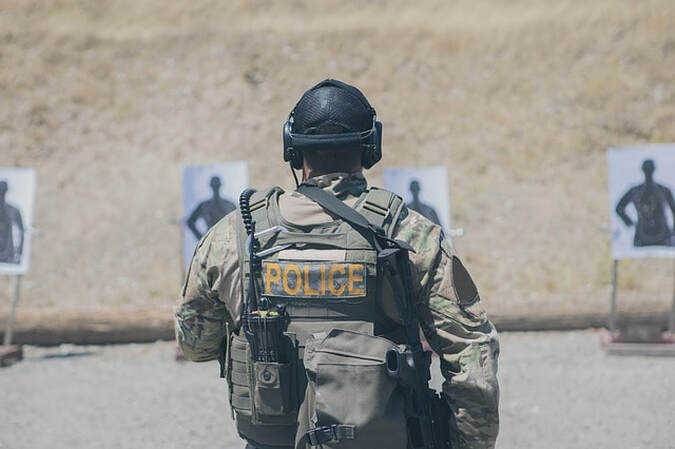
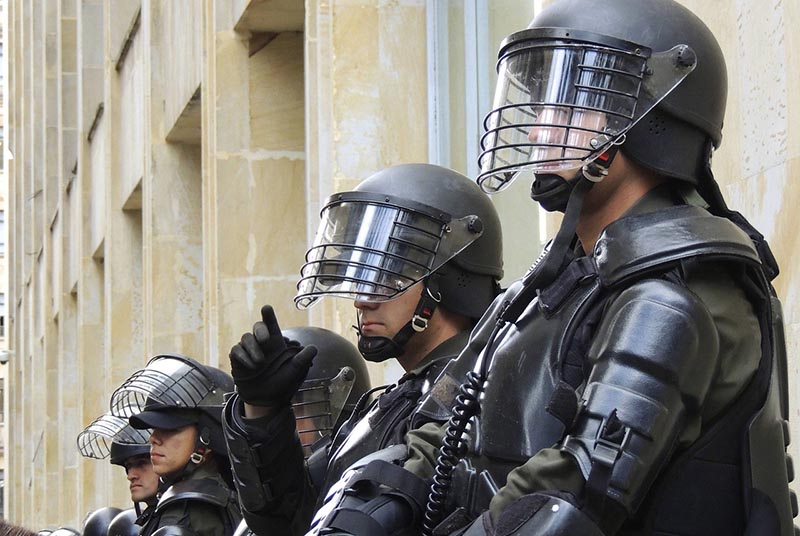

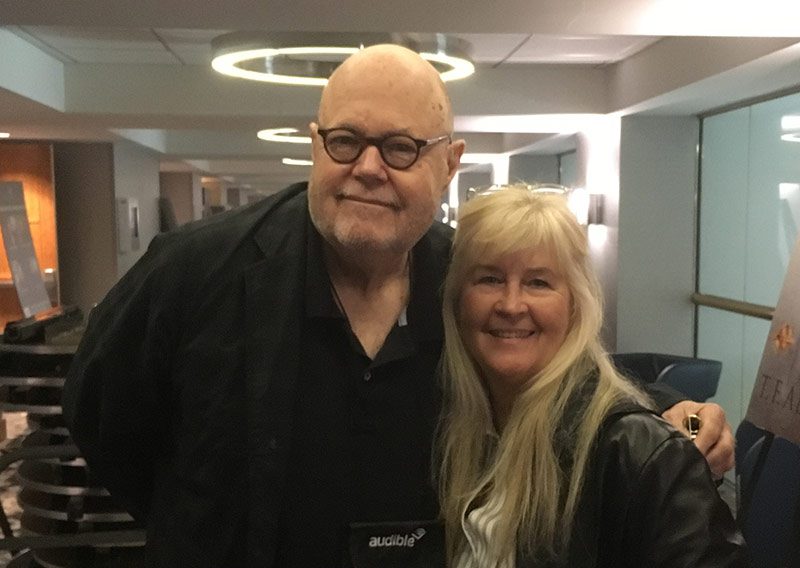
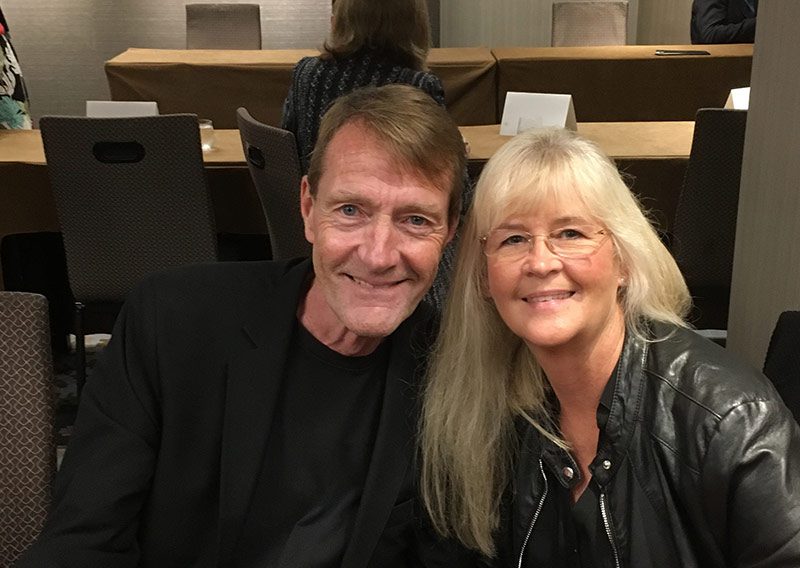

 RSS Feed
RSS Feed

